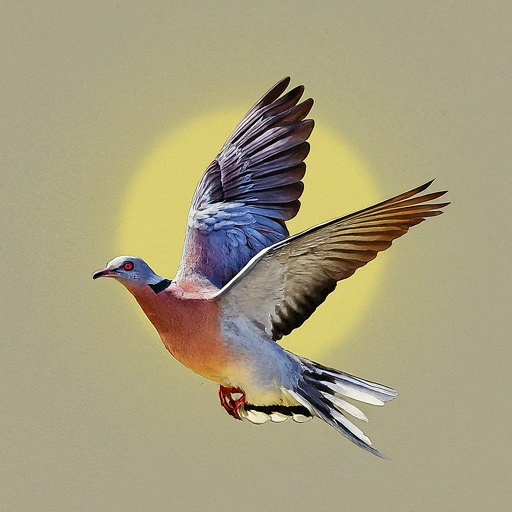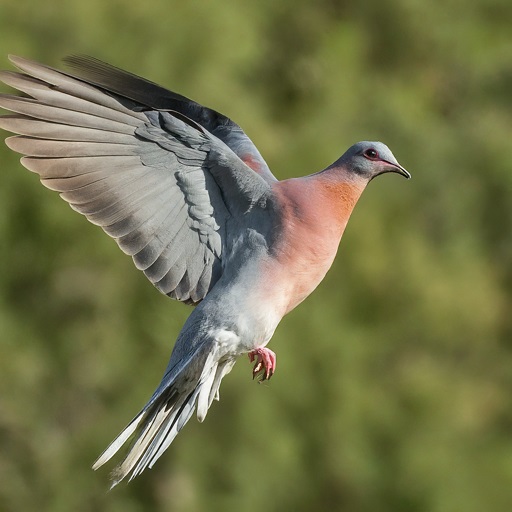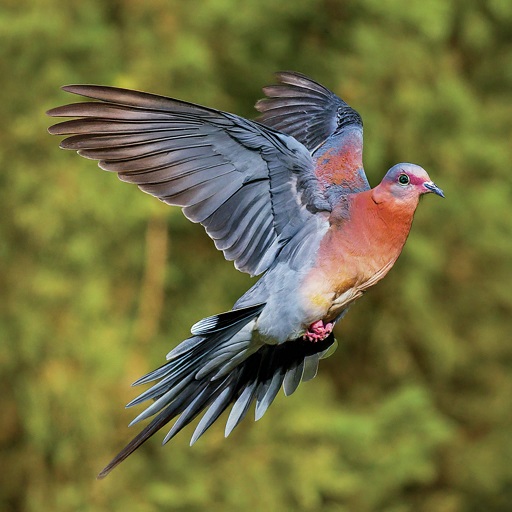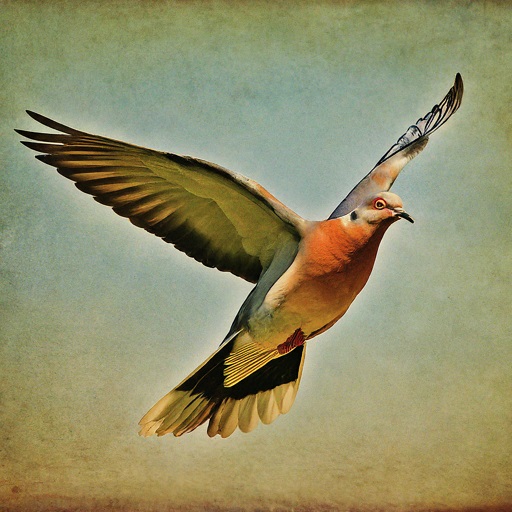5 Intriguing Passenger Pigeon Facts
If you want to know about passenger pigeon facts, you are in the right place. Today, I will help you embark on an exciting journey back in time to explore the incredible world of the passenger pigeon. I hope you have already heard about these once-abundant Birds, but did you know they also share some fascinating facts hidden in their feathers?
Therefore, please pay attention to this article because we will tell the history, biology & cultural significance of passenger pigeons while sprinkling in some real data & personal experience on research to help you gain more valuable insights. Therefore, without wasting any more time, let’s first begin with learning the major passenger pigeon facts you must know.
5 Intriguing Passenger Pigeon Facts

The Passenger Pigeon’s Former Abundance
Historical Population Estimates
Well, first, I did hours & hours of research & I learned about a study conducted by the esteemed Smithsonian Institution that stated the passenger pigeon population was nothing short of awe-inspiring. It is estimated that these birds once ruled around North America in mind-boggling numbers, with their population reaching 3 to 5 million individuals. Well, this is quite surprising & intriguing to know. Can you ever imagine the sight of passenger pigeons or immense that they would darken the sky for hours as they passed overhead? Indeed, it was a spectacle movement that the modern world can only imagine witnessing.
Ecological Impact
However, you should note that it wasn’t just passenger pigeons sharing numbers that made it extraordinary. I found studies from Corner University showing that ecological impact was also significant. You should know that these passenger pigeons were true agents of changes in their ecosystem which further affected not just the trees they nested in but also the distribution of plants & other animals.
Also, you should know that these creatures were identified for their voracious appetite for nuts which also play a significant role in shaping the composition of forest & their drop. Also, their dropping has enriched the soil, especially beneath their nesting sites contributing towards the delicate dance of nature in which these birds played the lead role.
Rapid Extinction & the Last Passenger Pigeon
Factors Leading to Extinction
When it comes to knowing about their extinction, there are also some intriguing facts to know. However, we have also shared an in-depth article on ‘Why did the passenger pigeon go extinct’ to help you learn common passenger pigeon extinction causes. Coming back to the point, various factors can contribute to the rapid decline of a passenger pigeon that has been discussed in this article.
According to my research & by the University of Michigan, one of the primary culprits behind passenger pigeon population decline is said to be human activity. The rapid extension of European settlements and industrialization led to widespread habitat destruction, leaving these magnificent creatures with limited space & place to nest as well as forage. In addition, the rise of commercial hunting for passenger pigeons further pushed their numbers to the brink of extinction.
The Last Passenger Pigeon
Can you ever picture yourself standing before the last passenger pigeon, Martha, in 1914 at Cincinnati Zoo? In 1914 at Cincinnati Zoo, a passenger pigeon named Martha (female) took its last breath & she was the last of her kind. Her death in September of that year marked the end of an era & promoted the realization that humanity’s actions had reversely altered the course of history. Also, the method tale serves as a stark reminder of the fragility of life & the profound impact we can have on our environment.
Passenger Pigeon Migrations
Remarkable Migratory Behavior
While researching, I learned about the Audubon Society’s findings regarding passenger pigeons, which was remarkable. You should note that passenger pigeons were known for their remarkable migratory patterns. They would embark on long-distance flights, covering thousands of miles during their seasonal migration. These magnificent Birds’ shared endurance and determination were nothing short of awe-inspiring. Surprisingly, their innate ability to navigate vast distances without modern technology’s help continues to baffle scientists to this day.
Cooperative Nesting & Reproduction
Only one can imagine yourself standing in the middle of a sprawling forest during the 19th century & witnessing an astonishing site as far as your eyes can see. At that time, massive colonies of passenger pigeons engaged in cooperative nesting behavior. To know more about their population, consider reading my article on ‘How many passenger pigeons were there’? According to the Journal of Orthology, passenger pigeons used to form colonies within thousands of nests tightly packed together. Search & unique nesting behavior also helps them to protect one another while raising their young in a secure environment in the event of natural predators.
Imagine yourself standing amidst a sprawling forest, & as far as your eyes can see, you witness an astonishing sight – a massive colony of passenger pigeons engaged in cooperative nesting. According to research published in the Journal of Ornithology, these pigeons formed colonies with thousands of tightly packed nests.
Passenger Pigeon’s Impact on Society
Economic Importance (Table 5)
If you pay attention to the history of the 19th century, you will find that passenger pigeons also hold significant economic importance in the United States. According to the records from The Library of Congress, hunting & selling these creatures were thriving industries at that moment, providing livelihoods for many people.
Passenger pigeon meat was considered a staple food for many people at that time phrases & their feathers were in high demand for fashionable clothing & hats. Apart from this passenger, pigeons were also employed for many other purposes. To know more about it, consider reading my article on ‘What were passenger pigeons used for.’ Returning to the point, the exploitation of passenger pigeons for economic gain ultimately hastened their decline.
Cultural Significance
Apart from their economic impact, passenger pigeon also held cultural significance in Native American communities. Before European settlers arrived, the native tribes across North America rewarded this bird. The passenger pigeon’s presence in various stories & ceremonies of these tribes reflected their deep-rooted connection to nature. Indeed, the loss of passenger pigeons was a poignant blow to cultural heritage and a poignant remainder of the value of conserving our natural heritages.
Lessons from the Passenger Pigeon’s Extinction

We must continue to learn from our past mistakes; we have made strides in wildlife conservation. As per studies by the national wildlife federation, the extinction of passenger pigeons catalyzed the formation of the U.S. Fish & Wildlife Service, which plays a crucial role in safeguarding endangered species today.
Also, you can find many international agreements & legislations like the endangered species act, which have been established to protect vulnerable wildlife and their habitats. While doing my research, I also learned about a study conducted by the World Wildlife Fund that showed we should continue studying passenger pigeons’ extinction for the effective conservation of today’s species.
Conservationists now focus on habitat preservation, captive breeding programs, and public awareness campaigns to protect endangered species. I will highly advise you to get involved with the conservationist because you will witness some remarkable success stories, including the recovery of the bald eagle and the giant panda, which further demonstrate the positive impact of collective effort in preserving biodiversity.
Conclusion
I hope you know all the five intriguing facts about passenger pigeons you need to know. I have given my best to help you travel through time, explore their past abundance, witness their rapid decline, marble at their migratory feet, and ponder their impact on society. You should note that the passenger pigeon story usually served as a poignant reminder of the importance of inspecting & cherishing our natural bird.
As we continue to progress & move forward, we should also be the champion of conservation, ensuring no more extraordinary creature like the passenger pigeon fades into the annals of history. Therefore, let’s come together & learn from our past mistakes to protect the present & build a sustainable future for all level beings, especially for the upcoming generation to come on this beautiful planet we call home.
I have given my best to give you all the information needed to know about passenger pigeon facts. If you find this article helpful, then consider sharing it. Your share will help people learn about five intriguing passenger pigeon facts by traveling through time. Also, check my other helpful guide on passenger pigeon habitat. See you in the next post, till then, take care & goodbye.





